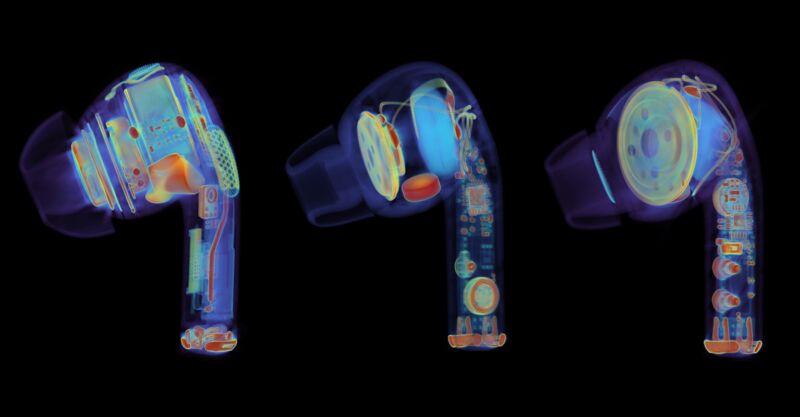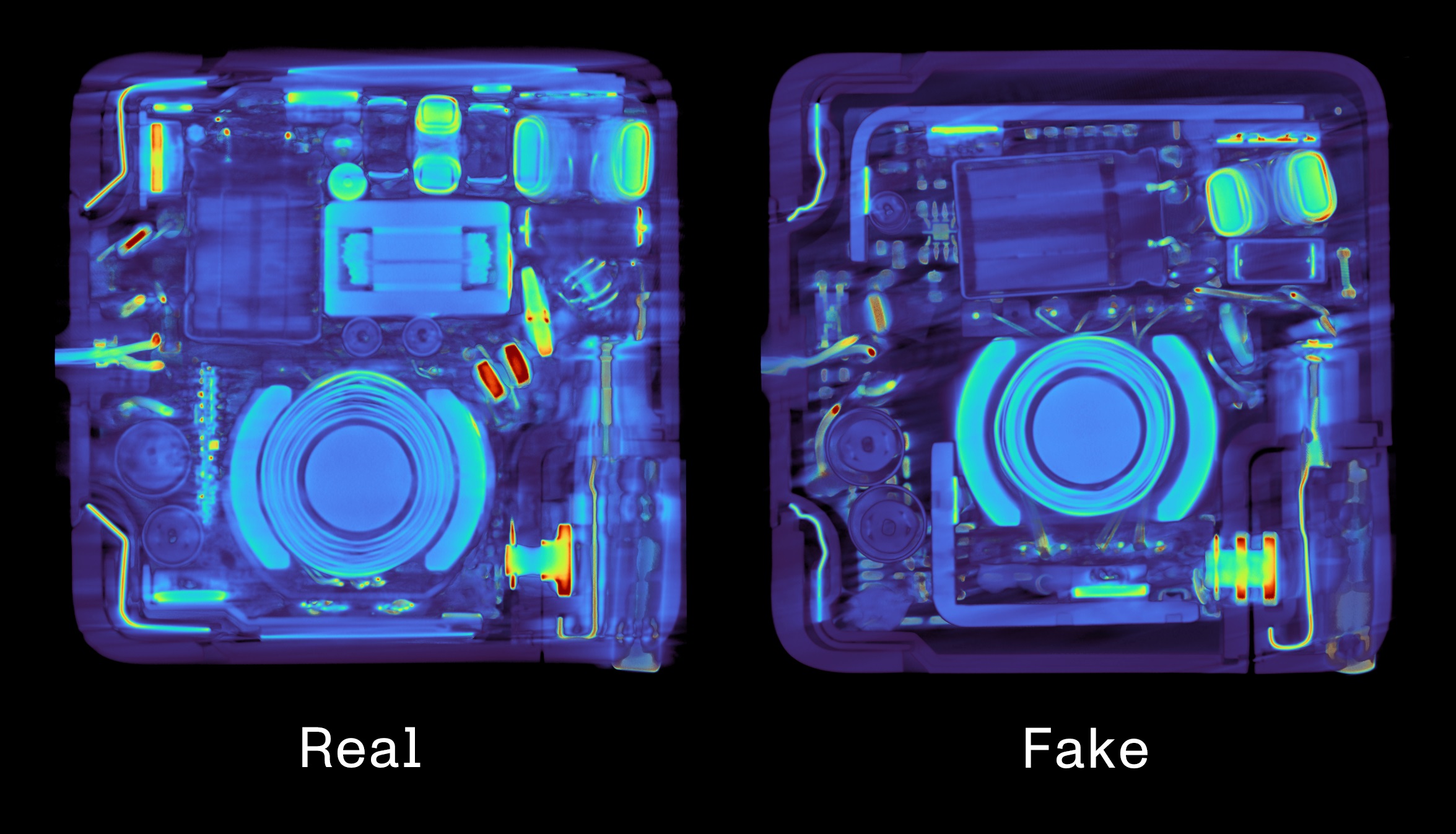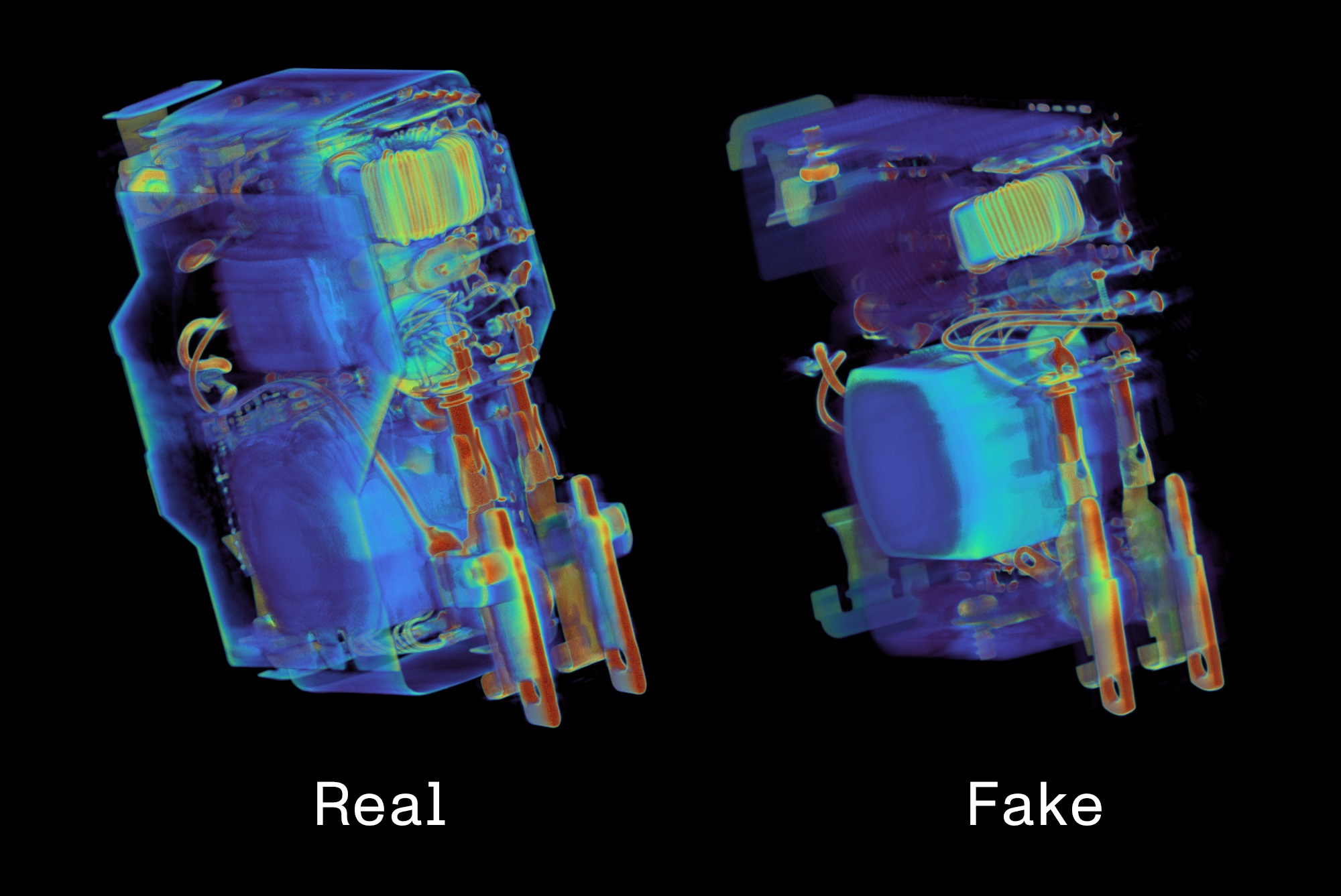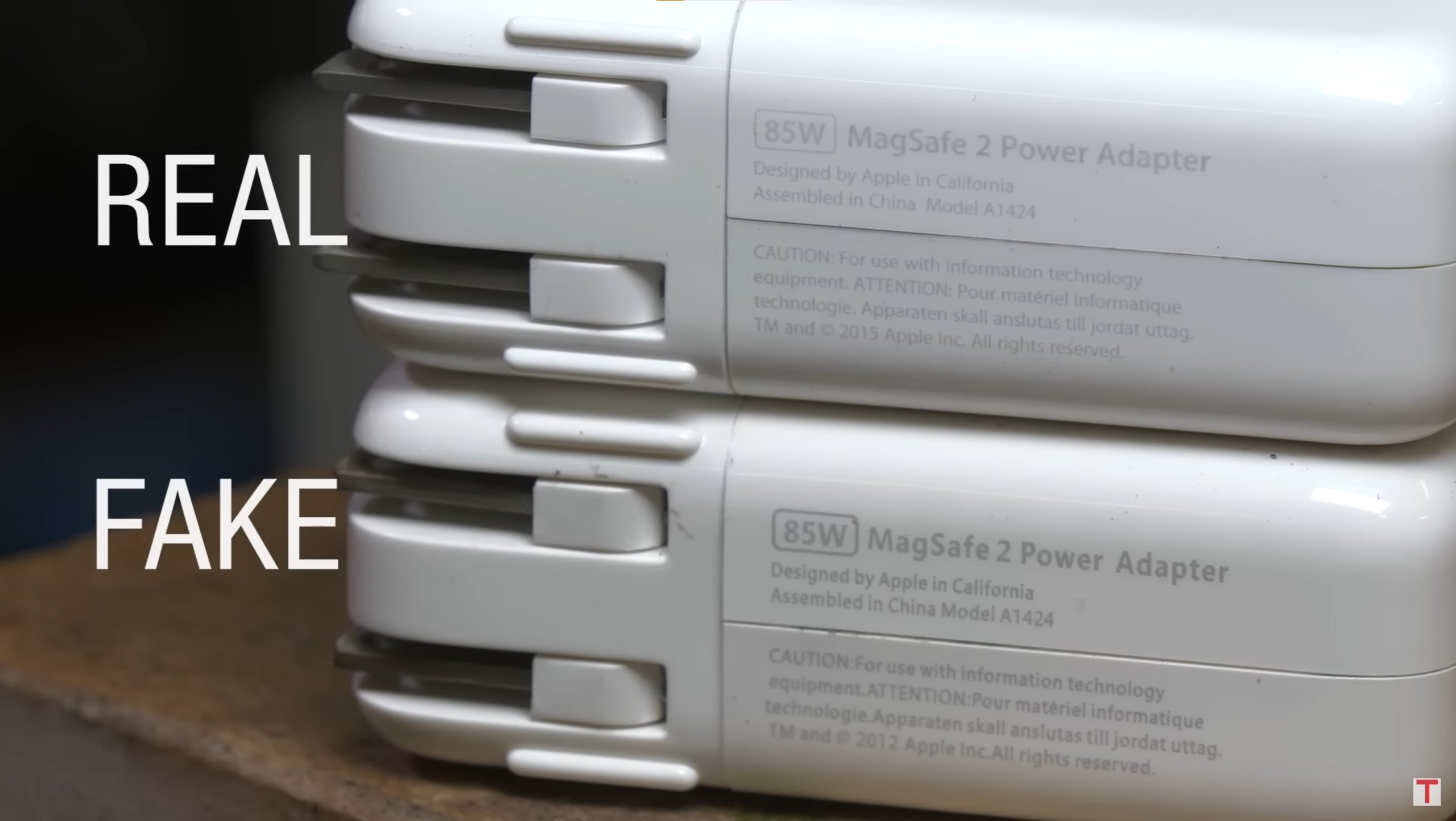
Whether they're products pretending to be made by a brand or devices claiming to be something they're not, (like a microSD card posing as an SSD), fraudulent electronics pose a threat to unsuspecting shoppers' wallets and, at times, their safety. With their popularity and high prices, scammers often target Apple products. But what's actually inside those faux Apple devices?
To find out, Lumafield busted out its $75,000 CT scanner to illustrate what people get when they end up with counterfeit MacBook chargers or knockoff AirPods Pro.
Lumafield makes industrial CT scanners and software. Lately, it has been using its Neptune scanner to examine electronics, like Apple's $130 Thunderbolt 4 cable. This week, Lumafield provided CT scans (which you can play with via Lumafield's online Voyager software) of the AirPods Pro 2nd Generation (here), two counterfeits (here and here), as well as a look at Apple's 85 W MagSafe 2 Power Adapter (here) and a fake (here).
MagUnsafe charger
Let's start with the charger since bad chargers can be dangerous. For example, a late 2016 report from UL Solutions found a failure rate of over 99 percent when examining 400 counterfeit Apple adapters, with 397 posing "fire and shock hazards" [PDF].
 Neptune's scan of the chargers.
Neptune's scan of the chargers. The real charger has a larger, thinner heatsink.
The real charger has a larger, thinner heatsink. The chargers were reportedly hard to differentiate from appearance but started feeling different when flipping the prongs open.
The chargers were reportedly hard to differentiate from appearance but started feeling different when flipping the prongs open.
Lumafield's CT scanned a pretend Apple charger purchased from a "sketchy" eBay seller (eBay's policies ban counterfeit products), Lumafield head of marketing Jon Bruner told Adam Savage's Tested YouTube channel in a Lumafield-sponsored video posted Tuesday. Bruner told Ars Technica via email that the charger was around $30. It showed noticeable differences from the true Apple 85 W MagSafe 2 Power Adapter, which is currently $79 on Apple's website.
In the gallery above, you can see an image showing how similar the two chargers look on the outside. But as detailed in the YouTube video, the one bought off eBay only has two inductors, as well as a large electrolytic capacitor, but a lot less circuitry overall.
A CT scan of Apple's charger showed "sophisticated" power management with various components for power conditioning and conversion," a Lumafield blog post on Tuesday said. The dupe's internals, however, are "far less complex," lacking the “filtering features that ensure safety and longevity in Apple's charger."
"This simplified internal structure not only raises concerns about the counterfeit’s performance but also its ability to safely manage the power supplied to your devices," Lumafield's blog said.
Heat management between the two chargers, while not tested, likely differs, too. Apple's thin heatsink is more advanced than the one in the copycat and enwraps most of the charger's transformer.
CT scans emphasize the broad coverage of the heatsink in the Apple charger, which can help prevent hot spots from forming. The heatsink uses more metal than the fake for, likely, better heat dissipation. Also, the Apple charger's use of converters, which the imitator forgoes, probably improves efficiency and enables the charger to generate less heat.
While there's an impressive amount of engineering in the spurious charger for a scam product, there's a chance the charger won't put out the desired voltages. But assuming it did or that the connected computer could adjust voltages, the fraudulent charger's likelihood of getting hotter might not pose an immediate threat. But in the long term, or if covered up, this could be dangerous.
"Over time, if you get frayed wires and it builds up a little more extra resistance, that'll increase the heat and all of these things … can build up and produce a dangerous situation," Zach Radding, an electronics engineer at Build Cool Stuff, said on Adam Savage's Tested video.
Finally, the knock-off charger has a fake grounded pin that's not actually connected to anything inside the charger and wouldn't be compliant in the UK:

"gadget" - Google News
November 10, 2023 at 02:47AM
https://ift.tt/hgGAque
Simple circuitry, surprising engineering: Inside counterfeit Apple gadgets - Ars Technica
"gadget" - Google News
https://ift.tt/Z3sSYik
Bagikan Berita Ini















0 Response to "Simple circuitry, surprising engineering: Inside counterfeit Apple gadgets - Ars Technica"
Post a Comment